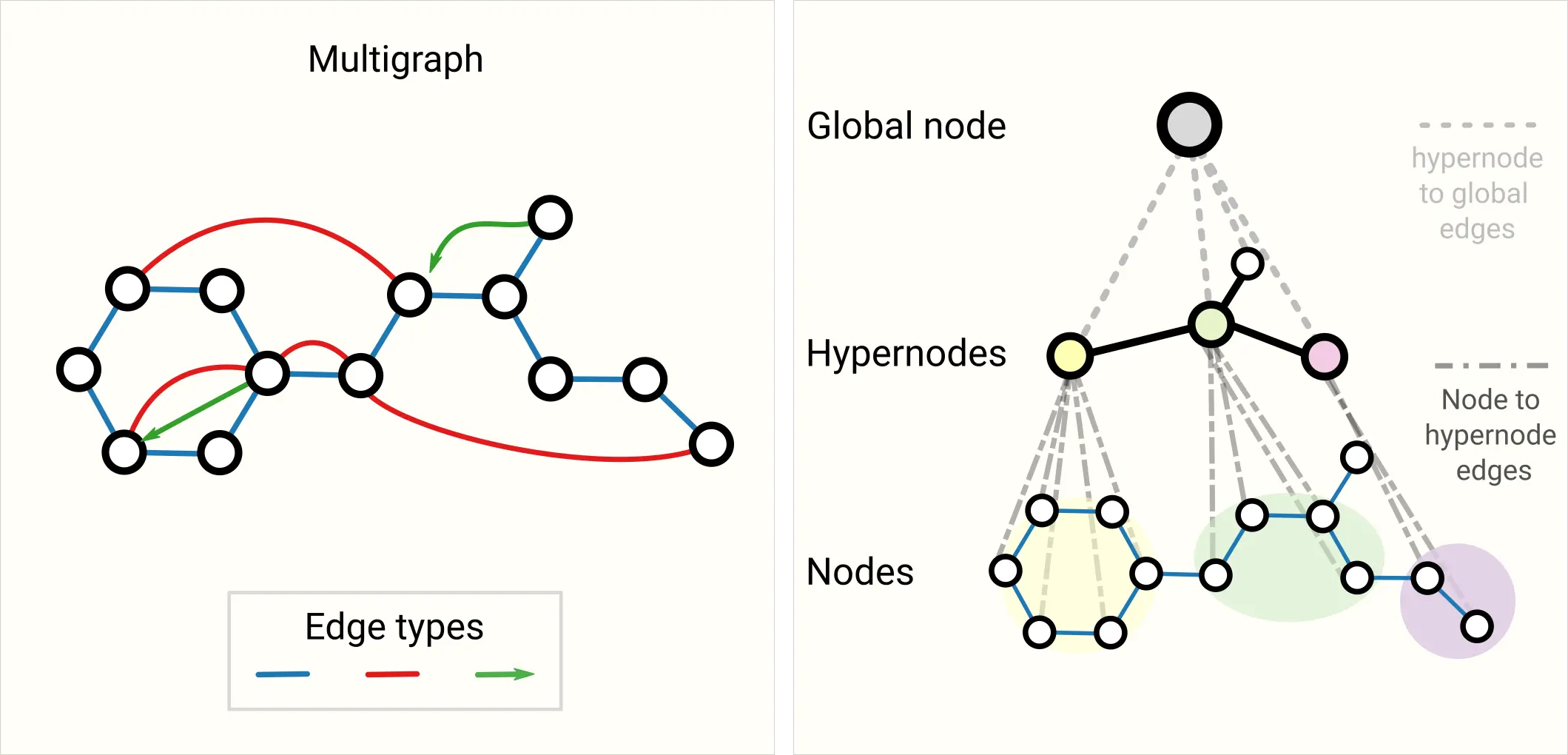Graph
A graph consists of a set of vertices and a set of edges between them. An edge connects vertex with vertex .
Terminology
An edge is incident to a vertex if it is directly connected.
Two (distinct) edges are adjacent if they share a vertex.
An induced subgraph is a subset of a graph that includes all the vertices of a given subset, along with every edge that exists between them in the original graph.
The dual of a graph is a graph where the vertices and edges are swapped. The dual contains the same information, represented differently.
In a complete graph, every pair of distinct vertices is connected by a unique edge, i.e. it’s fully connected.
A graph is homogenous if all vertices are of the same type.
If all vertices in a graph have the same degree, the graph is regular.
A cycle is a connected subgraph where every vertex has exactly two neighbours.
A k-partite graph is a graph where the vertices can be partitioned into k disjoint sets such that no two vertices in the same set are adjacent.
is sometimes used as a notation for the number of vertices in a graph.
is sometimes used as a notation for the number of edges in a graph.
is the density or average degree of a graph.
Simple graphs are graphs without loops or multiple edges between the same vertices.
Adjacency means two vertices are connected by an edge.
Incidence means a vertex is connected to an edge.
A walk is a sequence of edges which connects a sequence of vertices.
A trail is a walk in which all edges are distinct.
A path is a trail in which all vertices are distinct.
Transclude of reachable
Transclude of connected
Transclude of strongly-connected#^d42a8d
https://www.dmg.tuwien.ac.at/gittenberger/Folien/GrTh_u_NW.pdf
Nice visualization tool: https://csacademy.com/app/graph_editor/
multigraph, hierarchical graph:

Some basic graph notes:
Link to originalNeighbourhood of a vertex
The neighbourhood of a vertex in a graph is defined as its immediately connected neighbours:
Read: ”The neighbourhood of vertex is the set of all vertices , such that there is an edge from to in the set of edges or there is an edge from to in the set of edges .” (for undirected graphs, )
Sometimes this is denoted as .
The number of verticies in the neighbourhood is called the degree.When itself is not part of the neighbourhod, we call it the open neighbourhood (default). If it is, then we call it the closed neighbourhood, denoted by (as opposed to ).
Transclude of triplet
Transclude of triangle-graph#^9c96d8